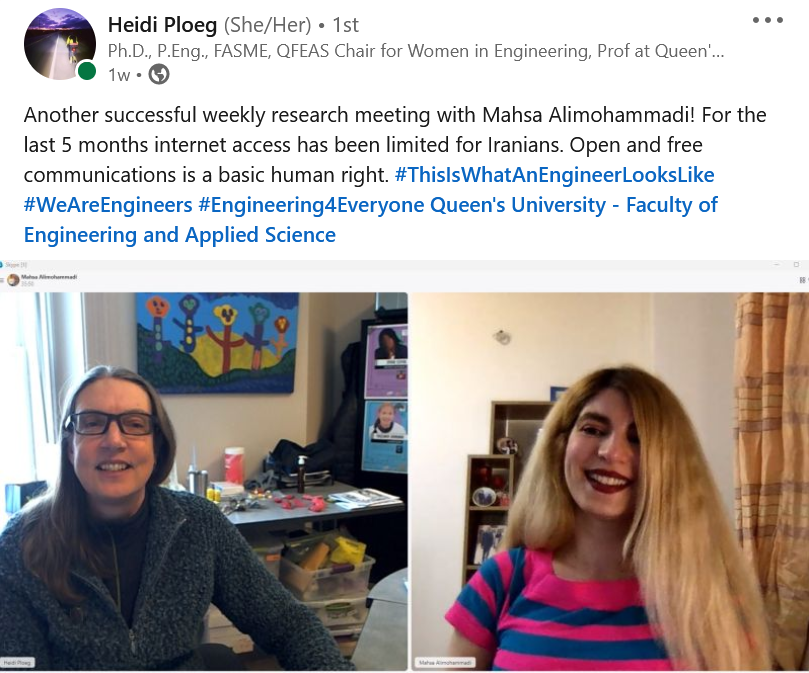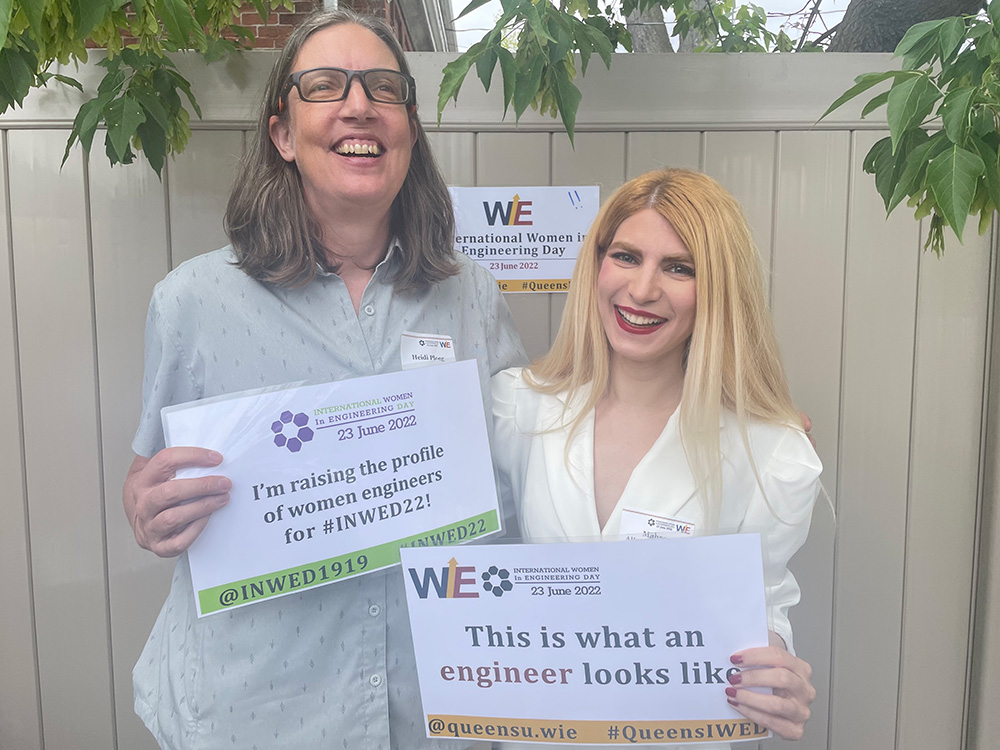The research of Mahsa Alimohammadi, a PhD candidate in Civil Engineering at Khajeh Nasir Toosi University of Technology in Tehran, may lead to stronger, longer lasting polymers used in implants.
Specifically, she is looking at the fracture properties and “fatigue life” of bone cement used in the space between bone and implants. She intends to complete three papers and defend her thesis by this summer.
Here at Queen’s, Heidi Ploeg became co-advisor to Alimohammadi upon the Iranian student’s arrival for a 16-month term which ended in September last year, and where research experiments many times stretched into the late night. Since then, the two continue to meet weekly via Skype.
According to Ploeg, who is Queen’s Chair for Women in Engineering, increasing the number of women in engineering is important for everyone.
“Without diversity, engineers solve the wrong problems with less than optimum solutions,” she said in a profile last year to mark the United Nations General Assembly's declaration of Feb. 11 as the International Day of Women and Girls in Science.
She believes her work with Alimohammadi is an example of how to achieve that goal: two women engaging in productive research, despite their different cultural backgrounds, that may lead to biomedical improvements for the growing number of people who get joint replacements in Canada.
Both teacher and student acknowledge the difficulties of continuing that relationship in a country with limited internet access.
Zoom is not allowed in Iran but Alimohammadi and Ploeg can meet over Skype. Alimohammadi uses a virtual private network (VPN) to connect to the lab’s workstation, but it doesn’t always work and during those times she can’t access her workstation to carry out her modelling. Internet tends to be more reliable on Fridays there, so they schedule their one-hour weekly sessions on that day.
Ploeg regularly shares updates on social media of her research meetings with Alimohammadi along with screenshots of their sessions and the message: “Open and free communications is a basic human right.”

In working with Alimohammadi, she’s learned the percentage of women who study STEM subjects in Iran is much higher than in Canada. An estimated 70 percent of Iranian university graduates in STEM programs are women, according to author Saadia Zahidi, compared to about a third of enrolments in Canada. (Women undergraduates in engineering at Queen’s are 28 percent as of Fall 2022; the number of women students in graduate study are 31 percent.)
“It’s a pathway for women in Iran to study sciences,” says Ploeg, who adds there are a lot of Iranian female students at Queen’s and in universities across Canada.
But Iran’s percentage of female faculty is a problem just as it is in Canada, although the numbers are improving. According to the American Iranian Council, the percentage of female faculty members in Iran has grown from just 1.4 per cent before the Islamic Revolution to 24 per cent by last year. (Women faculty in engineering at Queen’s is 21 percent.)
“Engineering will only find the best solutions to the most complex challenges we are facing with a diverse, including gender-balanced, community. We need all perspectives and experiences to solve the multidisciplinary challenges that we are currently facing like climate change and global health.”
Alimohammadi also joins the ranks of Ploeg’s students and graduates from around the world.
“I have a family of students who have graduated from programs here and they have their own family of students,” Ploeg says. Citing one graduate from Chile who has a student at Queen’s collecting data toward her own engineering research, she says much of that collaboration with her family of students is online.
“I think it’s a great way to do research. It’s a modern way to do research.”
